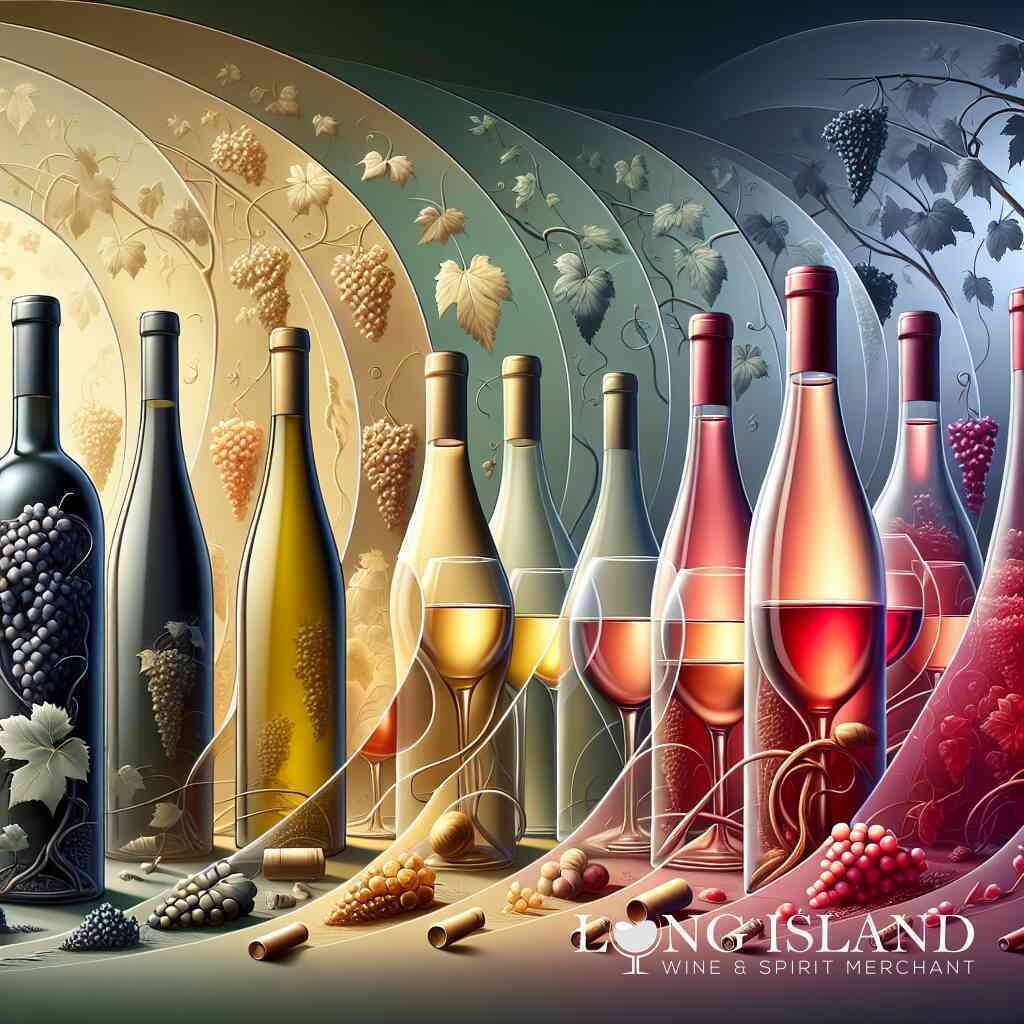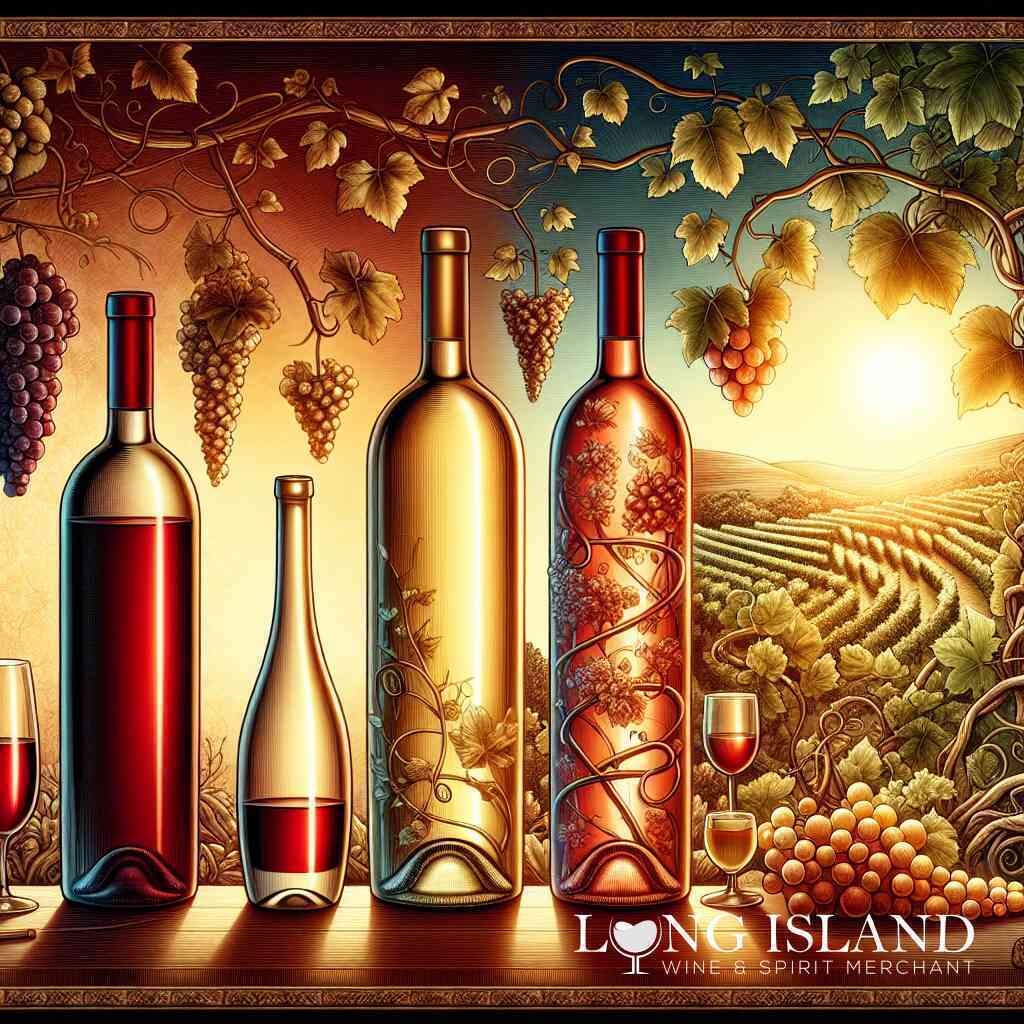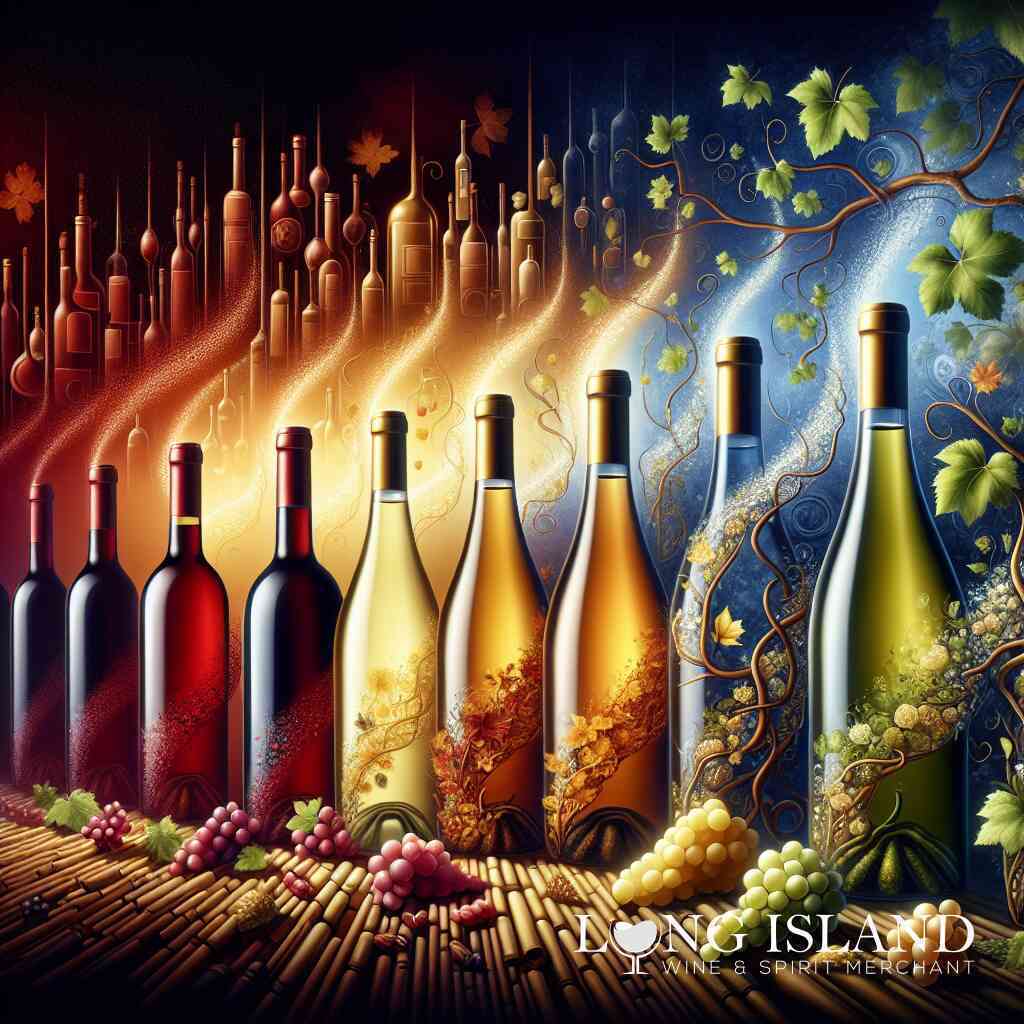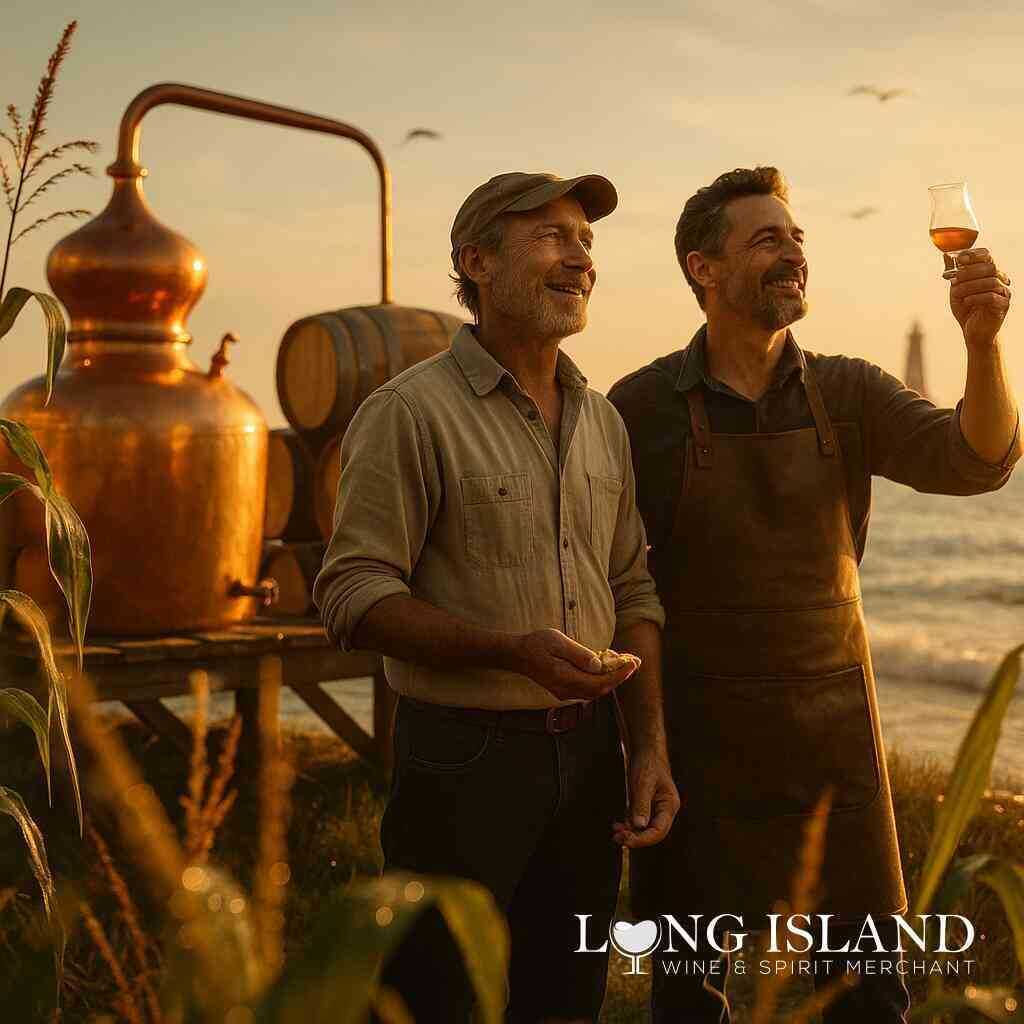
How Many Calories Are in a Bottle of Wine?
June 16, 2024
Decanting the Mysteries of Wine Calories
Understanding Wine Calorie Content
When embarking on a journey through the vast vineyards of wine knowledge, one might pause at an often-pondered question: how many calories does a bottle of wine hold? The answer, while nuanced, illuminates the intricate dance between grapes, fermentation, and the eventual libation that graces your glass. Calories in wine derive primarily from two sources: the alcohol content and the residual sugars left after fermentation. Alcohol, being denser in calories, contributes significantly to the total caloric value of a wine. A standard 750ml bottle of wine can vary widely, containing anywhere from approximately 450 to 700 calories. This spectrum reflects the diversity in wine styles, from the light, spritely dry white wine to the rich, opulent sweet red wine.
The Impact of Alcohol on Caloric Intake
Alcohol carries a caloric density of 7 calories per gram, positioning it between the caloric values of carbohydrates (4 calories per gram) and fats (9 calories per gram). This density underscores the substantial role alcohol content, or alcohol by volume (ABV), plays in determining a wine’s calorie load. Wines with higher ABV percentages naturally possess more calories, emphasizing the importance of moderation and understanding one’s own dietary goals about wine consumption. Engaging with wine calorie guides can offer enlightenment, allowing individuals to make informed decisions that align with their personal health and enjoyment objectives.
How Wine Compares to Other Alcoholic Beverages
In the realm of alcoholic beverages, wine sits in a unique position on the calorie spectrum. Compared to light beers, the average glass of wine may contain a few more calories, attributed to its higher alcohol content. However, when measured against the likes of heavy craft beers, sugary cocktails, and spirits consumed with calorie-laden mixers, wine often emerges as a more calorie-conscious choice. This attribute, combined with wine’s storied tradition and the complexity of its flavors, makes it an enduring favorite among those who wish to imbibe with consideration for both culture and calories.
Understanding wine’s caloric composition not only enriches one’s appreciation of this beloved beverage but also empowers individuals to make choices that best suit their lifestyle and dietary preferences. Whether savoring a glass of dry white wine or relishing the sweetness of a Moscato, knowledge about wine calories can enhance the experience, merging the joy of tasting with the conscientiousness of consumption.
From Vine to Glass – What Factors Affect Wine Calories
The Role of Sugar in Sweet Red Wine and Moscato Wine Calories
The journey from vine to glass encompasses numerous factors that culminate in the calorie content of wine, with sugar playing a pivotal role, especially in sweet red wines and Moscato. Sugar content in sweet red wines and Moscato directly influences their calorie count, as wines with higher residual sugar levels naturally contain more calories. After fermentation, the residual sugars that remain unconverted to alcohol contribute not just to the sweetness profile but also to the caloric density of these wines. Sweet wines, therefore, tend to be higher in calories compared to their dry counterparts due to this residual sugar. For anyone concerned about the sugar content in sweet red wine and Moscato, the key is understanding that moderation and balance are paramount. When indulging in the sweeter delights from our extensive Long Island wine selection, being mindful of serving sizes can help manage caloric intake without sacrificing the pleasure of the experience.
Dry White Wine vs. Caymus Wine – A Calorie Comparison
Comparing dry white wines with those produced by renowned labels such as Caymus offers a lens into how varietals and wine-making techniques impact calorie content. Dry white wines, known for their crisp and refreshing nature, usually have fewer calories due to lower sugar content and often lower alcohol by volume (ABV) than richer, full-bodied wines like those from Caymus Vineyards. A glass of dry white might hover around 120 calories, while a similar serving of a sumptuously layered Caymus Cabernet Sauvignon could edge upwards towards 150 calories or more, contingent upon its ABV and residual sugars. This variance showcases the importance of wine labels in revealing the nutritional aspects of each bottle. By choosing the best wine from Long Island Wine and Spirit Merchant, aficionados can align their selections with dietary considerations, ensuring that each pour from their wine glass harmonizes with their health goals.
Alcohol by Volume (ABV) and its Influence on Calories
Alcohol by Volume (ABV) stands as a critical determinant in the calorie count of a wine, asserting itself alongside residual sugar as a primary contributor to wine’s caloric makeup. ABV delineates the percentage of alcohol contained within a volume of wine, directly correlating to the caloric density of the beverage. Higher ABV wines command a greater number of calories, for example, a robust red with an ABV of 14% will invariably be more calorie-rich than a light-bodied white with an ABV of 11%. The fermentation process in winemaking, which converts sugars in grapes to alcohol, is instrumental in determining a wine’s final ABV. A knowledgeable selection of wines, and keeping an eye on ABV percentages, enables enthusiasts to tailor their indulgences to fit within a calorie-conscious lifestyle without foregoing the depth and diversity of flavor profiles available among Long Island’s fine wines and spirits. An understanding of ABV not only enhances one’s ability to choose wines more thoughtfully but also enriches the overall tasting experience, marrying the art of wine selection with the science of nutrition.
A Closer Look at Red, White, and Rose Wine Calories
Average Calories in a Bottle of Red Wine
When venturing through the rich, velvety landscape of red wines, it’s essential to note the considerable variance in calorie content among different varieties. Red wine, celebrated for its depth of flavor and potential health benefits, can wield a caloric punch, primarily due to its alcohol and residual sugar content. On average, a bottle of red wine contains about 625 calories, but this figure can slide up or down depending on the specific red wine’s characteristics. For instance, a bottle of light-bodied Pinot Noir may rest at the lower end of the calorie spectrum, while a luscious bottle of Shiraz, with its higher alcohol content and richer body, might tip the scale at a higher caloric value. At Long Island Wine and Spirit Merchant, aficionados can explore a meticulously curated array of fine red wines, selecting the perfect balance between indulgence and caloric consideration.
White Wine Calories – Lighter Than You Think?
Diving into the realm of white wines unveils a spectrum of calorie counts, often lighter than their red counterparts. The calorie content in white wine varies significantly across different styles and sweetness levels, typically ranging from 410 to 550 calories per bottle. The key factors influencing these variations include the wine’s alcohol by volume (ABV) and residual sugar level. For example, a dry white wine like Sauvignon Blanc may offer a refreshing taste with fewer calories due to its lower sugar content and crisp character. Alternatively, a sweeter Riesling carries more calories, attributable to its higher residual sugar. At Long Island Wine & Spirit Merchant, enthusiasts can discover an exceptional selection of white wines, from the light and zesty to the rich and sweet, each with detailed wine nutrition details to guide your selection.
Rose Wine – A Happy Medium?
Rose wine, with its alluring hue and delightful balance of flavors, typically presents a happy medium in the calorie stakes, nestled between the lighter whites and the richer reds. The calorie content of a standard 750ml bottle of rose can vary widely but generally falls in the range of 480 to 580 calories, influenced by factors such as the grape variety, production method, and, notably, the sugar content. These wines blend the refreshing crispness of white wines with some of the body and complexity found in reds, offering a versatile choice for those seeking moderation in calories without compromising on taste. At Long Island Wine and Spirit Merchant, rose wine aficionados will find a diverse array of options that embody the essence of Long Island’s wine culture, catering to every palate while mindful of caloric intake. Explore our selection, from dry and subtle roses to fruity and slightly sweeter versions, each perfect for adding that special touch to your wine glass without overindulging in calories.

Selecting Low-Calorie Wine Options
Wine Selection Tips for the Calorie-Conscious
For those navigating the intricate world of wine while trying to maintain a calorie-conscious diet, selecting the right bottle can sometimes seem overwhelming. However, it’s entirely possible to enjoy the depth and variety that wines offer without derailing your health goals. Begin with selecting low-calorie wines, opt for wines that have a lower Alcohol by Volume (ABV) percentage, typically those under 12.5%. These often include lighter white wines like Sauvignon Blanc and certain sparkling wines. Another key tip is to seek dry wines over sweet options, as dry variants have fewer residual sugars, which can significantly lower the calorie count.
Top Picks for Low-Calorie Wines at Long Island Wine and Spirit Merchant
At Long Island Wine and Spirit Merchant, we take pride in offering a diverse selection that caters to every palate and dietary consideration, including those seeking lower-calorie wine options. Among our curated picks, dry white wines like Chardonnay and Pinot Grigio often feature lower calorie counts, making them excellent choices for health-conscious wine enthusiasts. Additionally, our selection of roses provides a perfect balance, combining the aroma and complexity of wine with fewer calories. For red wine lovers, opting for a light Pinot Noir can offer the indulgence of a red with fewer calories than its full-bodied counterparts. We encourage our customers to explore these options and more in our Commack store or online, ensuring your wine rack is filled without compromising on your dietary goals.
The Importance of Wine Labels in Understanding Calorie Content
Understanding the calorie content in a bottle of wine can often start with a simple glance at the wine label. Labels contain critical information, including the ABV, which is a direct indicator of calorie content. The higher the ABV, the higher the calorie count, as alcohol has more calories per gram than sugars. Additionally, labels can also provide insights into the sweetness level of the wine, another essential factor affecting calorie content. Wines labeled as “dry” typically have fewer calories than those described as “sweet” or “dessert” wines. At Long Island Wine & Spirit Merchant, we believe in transparency and education, ensuring our customers have access to detailed wine nutrition details to make informed choices that align with their lifestyle and health objectives. Whether exploring our wine selection in-store or engaging with our online resources, we strive to ensure you know how to choose the best wine for your glass, embodying a harmonious blend of flavor, tradition, and wellness.
Incorporating Wine into a Healthy Lifestyle
Balancing Fine Wine and Good Spirits with a Healthy Diet
Adopting a healthy lifestyle doesn’t mean you have to forgo the refined pleasures of a well-curated wine rack. Fine wine and good spirits can harmoniously coexist with a balanced diet, allowing for both nutritional wellness and sensory satisfaction. The key is in the selection and moderation of your wine consumption, focusing on wines that offer lower calorie counts without compromising quality. For instance, opting for a dry white wine or a light-bodied red wine from Long Island Wine and Spirit Merchant ensures you can enjoy the nuanced flavors of Long Island wine without overindulging in calories. By integrating wine into your diet in a mindful way, you embrace a lifestyle that values both health and enjoyment, allowing you to savor each sip from your wine glass with a sense of well-being and balance.
Moderation and Mindfulness – Enjoying Your Wine Glass Without Guilt
The art of wine drinking is as much about mindfulness as it is about taste. Practicing moderation and mindfulness allows you to enjoy your wine glass without guilt, focusing on the quality of the experience rather than quantity. This means savoring the aromas, the flavors, and the texture of the wine, appreciating each aspect of its character. Long Island Wine and Spirit Merchant encourages wine lovers to cultivate this mindful approach to wine consumption, recommending wines that enrich the senses while aligning with healthy lifestyle choices. Sipping a glass of rose wine, for instance, can be a delightful experience when done with attention and appreciation, reinforcing the joy of moderation. By being mindful of the servings and selecting wines that complement a balanced diet, you can revel in the pleasures of wine tasting without the concerns of excessive caloric intake.
Wine Tasting Events at Long Island Wine and Spirit Merchant as a Way to Discover Low-Calorie Wines
Wine-tasting events offer a golden opportunity to explore a variety of wines, including those that are lower in calories but rich in flavor. Long Island Wine and Spirit Merchant frequently hosts wine-tasting events in Long Island, providing a platform for wine enthusiasts to discover new favorites that align with their health and dietary goals. These events are not just about tasting, they’re educational experiences that dive into the nuances of wine, including insights into low-calorie wine options and how to enjoy wine as part of a healthy lifestyle. Participants learn about the fermentation process in winemaking, the factors influencing a wine’s calorie content, and how to discern the subtle differences in taste. With guidance from knowledgeable sommeliers, attendees can navigate through the extensive selections available at Long Island Wine and Spirit Merchant, finding those special bottles that offer joy in every glass without compromising their wellness journey.
Crafting the Perfect Case of Wine for the Health-Conscious
Custom Case of Wine
For those who prioritize both their health and their palate, creating a custom case of wine is an ideal solution. Long Island Wine & Spirit Merchant offers a unique service that caters to the discerning consumer looking for low-calorie wine options without sacrificing quality. Custom cases can be tailored to include wines that fit specific dietary preferences, from light, refreshing whites with fewer calories to robust reds with lower sugar content. This bespoke approach ensures that every bottle in your wine rack aligns with your health goals, allowing you to enjoy a glass of fine wine with confidence. Our custom wine bottle engraving service adds a personal touch, making each selection feel even more special.
Mother’s Day Case of Wine – A Healthy Toast
Celebrating Mother’s Day with a thoughtful case of wine is a wonderful way to show appreciation. Select from Long Island Wine & Spirit Merchant’s range of low-calorie wines to craft a gift that’s not only elegant but also mindful of health and wellness. Choose a combination of refreshing rosé, crisp white wines, and velvety reds, all low in calories but high in flavor, perfectly suited for a Mother’s Day brunch or dinner. Each bottle serves as a toast to her health, happiness, and the cherished moments you share. It’s a gift that extends beyond the ordinary, offering both celebration and care in each curated selection.
Father’s Day Case of Wine – Celebrate with Lower Calories
Father’s Day is another opportune moment to celebrate with intention and health in mind. A case of wine selected from the finest low-calorie options at Long Island Wine & Spirit Merchant ensures that the day is marked with both style and substance. Opt for wines that complement the robust flavors of a Father’s Day feast, from grilled meats to hearty vegetables, without adding unnecessary calories to the meal. By choosing lighter, dryer wines, you can elevate the dining experience while keeping health considerations in focus. It’s a thoughtful way to honor the father figures in your life, offering them the best in taste and quality, reflective of the love and appreciation you hold for them.

Savoring Each Sip – Wine Calorie Guide and More
Understanding Wine Nutrition Facts
In the quest to appreciate wine in all its dimensions, it’s not just the taste or aroma that intrigues the discerning palate but also its nutritional contour. Understanding wine nutrition facts offers a deeper appreciation of what each bottle brings to the table, beyond sensory delights. Each grape varietal, from the sun-drenched vineyards to the meticulous fermentation and aging processes it undergoes, contributes to the unique nutritional profile of a wine. For health-conscious enthusiasts and curious minds alike, familiarizing oneself with these aspects can enrich the enjoyment and appreciation of wine, aligning it with dietary considerations and lifestyle choices.
How Many Calories in Your Wine Glass?
Have you ever paused to wonder about the calorie content as you savor a glass of wine? The average calories per bottle of wine offer a benchmark, yet the diversity in wine styles and production methods means the answer can vary significantly. Factors such as the wine’s alcohol by volume (ABV), residual sugars, and serving size play pivotal roles in determining how many calories end up in your wine glass. This awareness helps in making informed decisions, allowing the enjoyment of wine to fit seamlessly into a balanced lifestyle, where each sip is savored with mindfulness and understanding.
Health Aspects of Wine – Beyond the Calorie Count
Exploring the health aspects of wine delves into a realm where pleasure meets prudence. Moderately consumed, wine, particularly red wine, has been associated with various health benefits, thanks to its content of antioxidants like resveratrol. However, the key is moderation, as excessive consumption can negate these potential benefits. While calories are a tangible measure, the holistic assessment of wine’s impact on health also considers these nutritional bonuses and the joy derived from moderate indulgence. It’s about balancing the enjoyment of wine’s rich tapestry of flavors and aromas with a mindful approach to consumption.
Wine Calorie Chart – A Handy Reference
A wine calorie comparison chart can be an invaluable tool for those keen on integrating their love for wine with a health-conscious lifestyle. This handy reference allows individuals to juxtapose different varieties of wine, providing clarity on which selections align with their dietary goals. Whether it’s choosing between a robust red or a sprightly white, a glance at such a chart helps decode the calorie content, making it easier to enjoy the wines you love without compromising on wellness goals.
Long Island Wine & Spirit Merchant, nestled in the heart of Commack, New York, celebrates the essence of fine wine and good spirits. With an expansive selection that caters to every palette and preference, this premier liquor store is dedicated to enriching your wine experience – from the knowledgeable guidance offered to helping you select the perfect bottle, to the joy of discovering new wines through our curated events. Whether you’re exploring the calorie content of your favorite wines, seeking low-calorie options, or simply in pursuit of your next favorite bottle, Long Island Wine & Spirit Merchant is your trusted partner, here to elevate each moment you choose to savor a glass of wine.
Frequently Asked Questions
Question: What factors contribute to the calorie content in a bottle of wine, and how can Long Island Wine & Spirit Merchant help me find a low-calorie wine?
Answer: The main factors contributing to the calorie content in a bottle of wine are the alcohol by volume (ABV) and residual sugar levels. Wines with higher ABV and sweetness tend to have more calories. At Long Island Wine & Spirit Merchant, we understand the importance of balancing enjoyment with a health-conscious lifestyle. Our selection includes a wide range of low-calorie wine options, from dry white wines, which are generally lower in calories, to lighter reds and roses. With our wine taste quiz, you can discover wines that align with your dietary preferences, making it easier to enjoy your wine glass without compromising your health.
Question: In the blog ‘How Many Calories Are in a Bottle of Wine?’ you mentioned the importance of wine labels in understanding calorie content. Can you explain what details I should look for on a wine label at your Long Island wine shop to stay within my caloric intake goals?
Answer: Absolutely! When visiting our Long Island wine and spirits shop or browsing our collection online, pay close attention to the Alcohol by Volume (ABV) percentage indicated on the wine label. This figure is crucial because wines with a higher ABV tend to have more calories. For those conscious of caloric intake, choosing wines with an ABV under 12.5% can be a wise choice. Additionally, look for terms like “dry” as opposed to “sweet” or “dessert” wines. Dry wines have fewer residual sugars, therefore they are often lower in calories. Our knowledgeable staff is always ready to assist and guide you through our selection, ensuring you find the perfect wine to fit your dietary needs.
Question: Can attending a wine-tasting event at Long Island Wine & Spirit Merchant aid in discovering new low-calorie wines?
Answer: Definitely! Our wine-tasting events are not only enjoyable but also educational experiences designed to explore a diverse range of wines, including those that are lower in calories yet full of flavor. By participating in these events, you’ll gain insights into the unique attributes of various wine varietals, learn about the alcohol content and residual sugars that contribute to calorie count, and how to enjoy wine as part of a healthy lifestyle. It’s a splendid opportunity to expand your palate and discover new favorites that align with your health and dietary goals, all while enjoying the vibrant atmosphere of our Long Island wine store.
Question: How can the custom case of wine service at Long Island Wine & Spirit Merchant cater to my interest in both fine wine and good spirits while maintaining a calorie-conscious diet?
Answer: Our custom case of wine service is designed to cater to the unique preferences and needs of our customers, including those maintaining a calorie-conscious diet. By taking advantage of this service, you can specify your interest in low-calorie wine options, and our team will carefully select wines that meet your criteria. Whether you prefer dry white wines, rosé, or light-bodied red wines, we can customize a case that fits within your dietary preferences without compromising on flavor or quality. This bespoke approach ensures that every selection in your wine rack is not only an exploration of Long Island wine and spirits but also aligns perfectly with your health objectives.
Question: What steps does Long Island Wine & Spirit Merchant take to ensure their customers can easily find wines that align with a health-conscious lifestyle?
Answer: At Long Island Wine & Spirit Merchant, we prioritize both the enjoyment and health of our customers. Our approach includes providing detailed wine nutrition facts for our selection, making it easy for customers to understand what they are consuming. We also offer a wine taste quiz to help identify your preferences, including options for lower-calorie wines. Furthermore, our knowledgeable staff are always ready to offer recommendations based on your specific dietary needs and preferences, ensuring you can find the best wine for your glass that aligns with a health-conscious lifestyle. With our wide selection and commitment to customer satisfaction, you can trust that you’re in good hands when selecting wine with us.
<introducing new wines that offer a balanced approach to enjoyment and health. Whether through our wine-tasting events, educational content, or personalized recommendations, we’re here to help you navigate the extensive world of wine in a way that fits your lifestyle.



